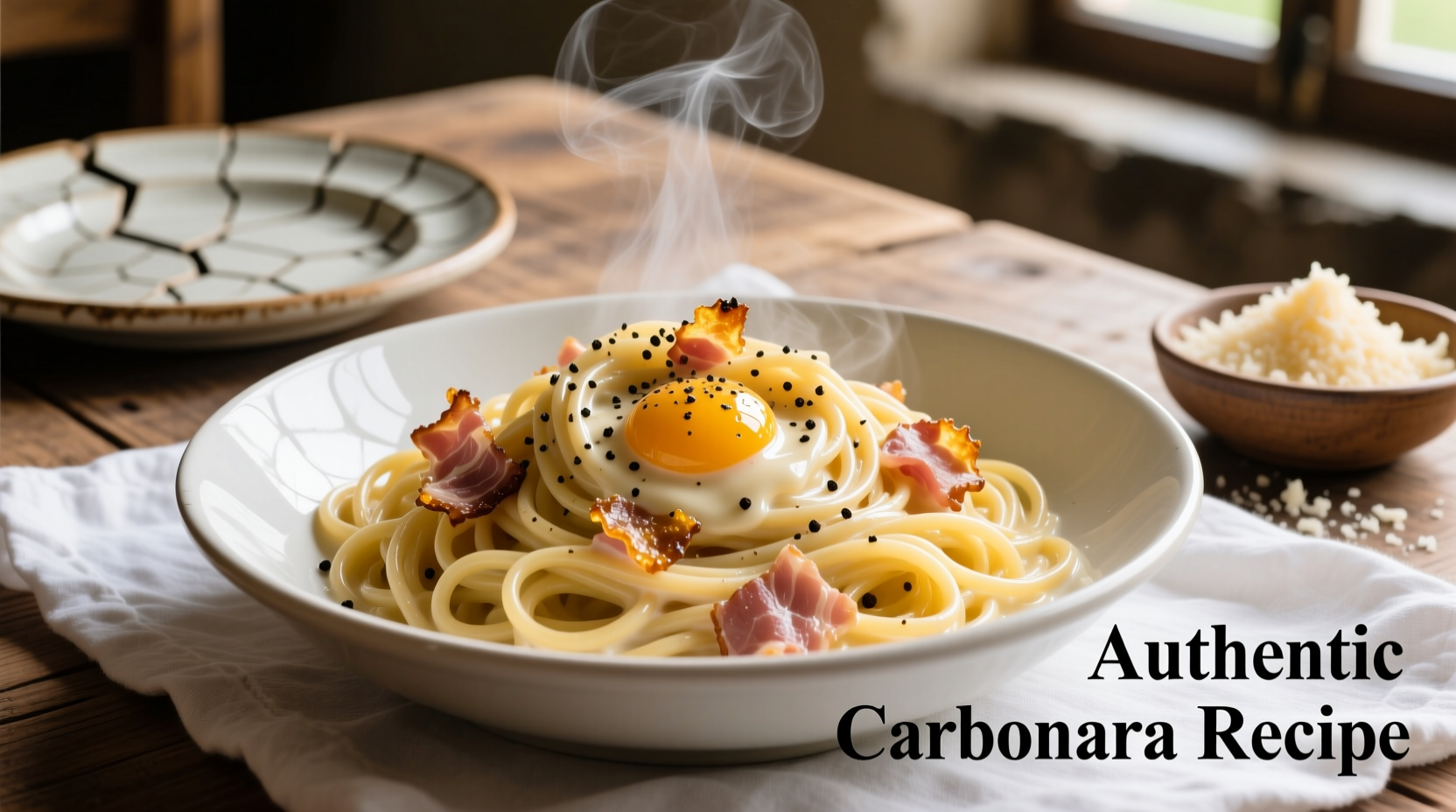Why Authentic Carbonara Needs No Sauce
Despite what supermarket shelves suggest, carbonara sauce doesn't exist in traditional Italian cooking. The creamy texture comes from a delicate emulsion created when hot pasta meets egg yolks, pecorino cheese, and starchy pasta water. This culinary magic has been perfected in Rome since the mid-20th century.
| Authentic Carbonara | Store-Bought Sauce Version |
|---|---|
| 4 simple ingredients (pasta, eggs, cheese, guanciale) | Often contains cream, flour, preservatives |
| Creaminess from egg-cheese emulsion | Creaminess from dairy or thickeners |
| Ready in 15 minutes | Requires heating sauce separately |
| Rich umami flavor from cured pork | Artificial flavor enhancers common |
The Evolution of Carbonara: A Brief Timeline
Understanding carbonara's history explains why sauce doesn't belong. According to the Italian Food Heritage Institute, carbonara emerged in post-WWII Rome:
- 1944: American soldiers introduced eggs and bacon to Roman cooks
- 1950s: First documented recipe appears in Italian newspaper
- 1960s: Recognized as Rome's signature pasta dish
- 1990s: Commercial "carbonara sauce" products emerge globally
- 2013: Rome's culinary authorities formally codified the authentic recipe

Mastering the Authentic Technique
Follow these professional chef-tested steps for perfect carbonara. The key is temperature control—too hot and you'll scramble the eggs, too cool and the sauce won't emulsify.
Essential Ingredients
- Pasta: 400g spaghetti or rigatoni (100g per person)
- Eggs: 2 yolks + 1 whole egg per person (room temperature)
- Cheese: 50g pecorino romano (aged minimum 8 months)
- Guanciale: 150g diced (substitute pancetta if unavailable)
- Pepper: Freshly cracked black pepper (1 tsp per person)
Step-by-Step Process
- Prep phase: Whisk eggs and 80% of cheese in bowl. Cook guanciale until crisp. Grate remaining cheese.
- Pasta cooking: Boil pasta in salted water, reserving 1 cup pasta water before draining.
- Critical transfer: Move pasta directly to guanciale pan with 1/2 cup pasta water. Remove from heat.
- Emulsification: Slowly pour egg mixture while stirring vigorously. The residual heat creates the sauce.
- Finishing: Add remaining cheese and pepper. Stir until creamy (should coat the back of a spoon).
Troubleshooting Common Carbonara Problems
Even experienced cooks struggle with carbonara's delicate balance. These solutions come from Gambero Rosso's culinary testing lab:
- Scrambled eggs: Temperature too high. Remove pan from heat before adding eggs. Use residual heat only.
- Runny sauce: Not enough starch. Reduce pasta water quantity or use a starchier pasta like rigatoni.
- Clumpy cheese: Cheese too cold. Ensure cheese is at room temperature before mixing.
- Dry texture: Insufficient fat. Increase guanciale by 20% or add 1 tsp reserved pork fat.
When Store-Bought Sauce Might Work (With Caveats)
While not traditional, commercial carbonara sauce has limited applications. The Barilla Academy notes these specific scenarios where sauce products might be acceptable:
- Emergency situations with no fresh ingredients available
- Cooking for large groups where technique consistency is challenging
- When serving to people with egg allergies (though this fundamentally changes the dish)
If using store-bought sauce, choose products without cream or flour. Add cooked guanciale and freshly cracked pepper to approximate authentic flavor. Remember: this creates a carbonara-style dish, not true carbonara.
Serving Like a Roman
In Rome, carbonara is served immediately in warmed bowls with extra pecorino on the side. Pair with a crisp white wine like Frascati. Never add:
- Garlic (absent in authentic recipes)
- Onion (not traditional)
- Heavy cream (a common American adaptation)
Leftovers don't reheat well—the emulsion breaks. If necessary, revive with a splash of hot water while gently reheating.











 浙公网安备
33010002000092号
浙公网安备
33010002000092号 浙B2-20120091-4
浙B2-20120091-4